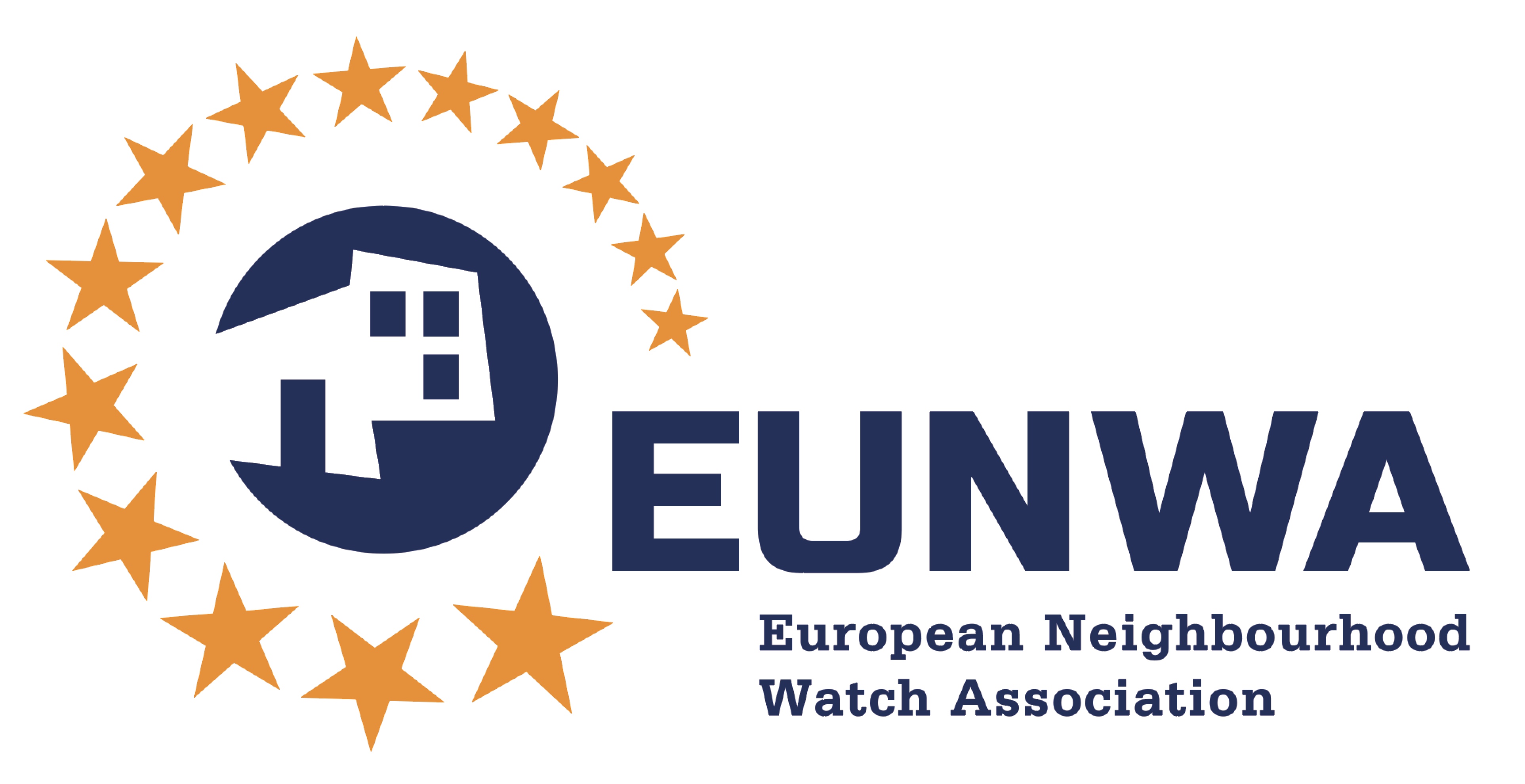Crises such as hybrid threats, armed conflicts, natural disasters, pandemics, and economic turmoil frequently pose significant challenges to the protection of human rights. In these circumstances, states and the international community must ensure that fundamental freedoms and rights remain safeguarded—even when drastic measures become necessary.
When thinking about human rights in times of crisis, many are reminded of the saying, “Those who are drowning must save themselves.” Yet we should remember that the cornerstone here is each individual’s right to be protected by the state. So just how far or close are we to that ideal when it comes to receiving state support in critical moments? And what specific situations and crises are we talking about?
Human Rights Protection During War and Armed Conflicts
Armed conflicts pose one of the greatest threats to human rights and to adherence to humanitarian law, often involving war crimes and mass refugee flows. International humanitarian law, including the Geneva Conventions, mandates the protection of civilians and prisoners of war. However, many governments and armed groups disregard these principles, leading to large-scale rights violations. Sadly, this is still happening in the 21st century, including in Europe. There are reports of deliberate attacks on civilians, a failure to aid the wounded and sick, shortages or complete lack of first-aid supplies, and other abuses targeting the local population.
Natural Disasters and Pandemics
Natural disasters like earthquakes, floods, and hurricanes can force people to relocate, overwhelm healthcare systems, and cause food shortages. In such situations, human rights include ensuring people’s access to basic needs, as well as imposing on the state a duty to provide information and take effective action.
Pandemics like COVID-19 have shown how difficult it is to balance the protection of public health with individual freedoms. The restrictions on movement we experienced had a considerable impact on both economic and social rights. Human rights advocates and influential public figures have questioned whether health and the right to life should have justified such sweeping limits on freedom of movement and assembly. In many places—especially authoritarian regimes—these measures opened the door to further human rights restrictions, including unmerited tracking of personal data such as people’s habits and movements.
A Fundamental Need: The Right to Health and Healthcare
In all of the scenarios noted above, access to sustainable healthcare is an essential requirement. The right to health is a key human right protected by various international agreements, including the European Convention on Human Rights and Fundamental Freedoms, as well as Article 111 of Latvia’s Constitution. It is the government’s responsibility to strengthen support mechanisms and ensure that people have access to medical care and medications—even in emergencies.
Adequate access to medicines and healthcare services is vital for public health. International law obligates governments to guarantee people’s access to necessary medicines, vaccines, and medical treatment, including state-funded care for vulnerable groups. But are we in Latvia really prepared to confront potential challenges?
It seems absurd that more and more people are afraid to call an ambulance for fear of a hefty bill. It is equally troubling that healthcare professionals feel underfunded and underappreciated. Although efforts have been made to explain the situation, public concern remains high. Doctors and nurses continue to complain about low pay and insufficient social protections.
During the pandemic, several countries introduced emergency measures to keep healthcare accessible for everyone. Experts, however, have debated just how well these measures worked. Providing equal treatment and equal access is no simple task, especially given many individuals’ unique circumstances. Keeping the public safe while protecting vulnerable groups—children, seniors, and those with chronic conditions who may lack financial reserves—is a complex endeavour. To do this effectively, it is not enough to rely on past experience; proactive planning for different crisis scenarios is needed.
Such crises often exacerbate existing inequalities and discrimination, limiting people’s access to work, education, and healthcare. Governments need to put support systems in place to protect those who are most at risk, since the treatment of vulnerable groups reveals how fragile society is as a whole. In Latvia, we have long discussed unequal access to goods and services, particularly in rural regions and remote areas. Lately, there has also been growing focus on pharmacy availability in both urban and rural settings, as well as on maintaining adequate reserves of essential medicines for crisis situations. Certified pharmacist Zane Dzirkale, a co-founder of the “Health Care System Resilience” think tank, addressed these issues in a recent publication.
Potential Solutions
When we talk about “the state,” we are also talking about every one of us—each playing our role and fulfilling our responsibilities. Yet recent years have shown the significant power of communities and civic organizations, including community centres and service hubs in towns and cities. We have no shortage of good practices in this realm. For instance, the Latvian Platform for Development Cooperation responded rapidly to Ukraine’s need for assistance; there are also inspiring examples of local community collaboration both in Latvia’s regions and in Riga. Support for Ukraine is ongoing, provided by the Marta Centre, the association “Tavi draugi,” and numerous other civic organizations. Crises have shown that the potential of communities is undervalued—even though the need for community engagement continues to grow.
Community strength is also reflected in the concept of community policing, where maintaining public order is not left solely to the police; residents, too, share responsibility. Community policing is built on trust, prevention, and more efficient crime reduction—rather than merely responding after the fact, the police work hand in hand with residents to solve problems at the neighbourhood level. Recall how a local resident in Latgale discovered a drone, alerted the local police unit, and set in motion a response well before the media picked up the story. This community-focused approach has proven successful elsewhere in the European Union and has become an integral part of Latvia’s State Police strategy.
Conclusions
Protecting human rights—especially the right to life and health—in times of crisis is one of the greatest challenges facing the modern world. The international community, national governments, and nongovernmental organizations must coordinate to ensure these rights remain intact, no matter how severe the crisis. Sustainable and effective healthcare policies can greatly enhance people’s living conditions and foster societal stability and resilience—offering protection for individuals’ health and lives. Equally important is the support of communities and NGOs, both in normal times and during periods of crisis.
Ilze Bērziņa
EUNWA Advisory Board, and co-founder of the think tank “Health Care System Resilience”; human rights expert, and lecturer at the Rīga Stradiņš University Faculty of Social Sciences.
References:
The relationship between young people and law enforcement is a dynamic and evolving issue, shaped by history, societal challenges, and emerging strategies aimed at building trust and cooperation. While tensions have existed for decades, there is growing momentum toward fostering understanding and collaboration between these two groups. This article explores the complexities of their relationship, examining past obstacles, modern influences, and potential solutions for a more constructive future.
Historically, interactions between youth and law enforcement have often been fraught with tension. Many young people perceive law enforcement as disconnected from their lived experiences, a sentiment fuelled by past incidents, media representations, and broader systemic issues. This distrust is particularly pronounced in marginalized communities, where economic and racial disparities have exacerbated feelings of alienation. However, societal progress has led to shifting expectations for both youth and law enforcement. Communities and police departments alike recognize the need for change, seeking ways to bridge the divide through engagement and reform.
In today’s digital world, information spreads rapidly, shaping public perception almost instantly. Social media platforms amplify both positive interactions and moments of misconduct, creating a complex landscape where law enforcement is scrutinized in real time. Viral incidents of excessive force have intensified scepticism, particularly among young people who are highly engaged in digital activism and civic movements. At the same time, these platforms provide opportunities for law enforcement agencies to foster transparency and open communication. Many departments are now embracing digital outreach to engage with the public, share success stories, and clarify policies in an effort to rebuild trust.
Recognizing the urgent need for stronger relationships, many national police forces across Europe and beyond are adopting community policing strategies. These approaches emphasize direct engagement in several ways. For instance, educational programs help teach young people about civic responsibility, the legal system, and conflict resolution, equipping them with the knowledge to better understand the role of law enforcement in their communities. Public forums provide a space for open and honest discussions, allowing youth and police officers to share their perspectives and build mutual understanding. Additionally, mentorship initiatives are proving to be effective in strengthening bonds, as they foster personal connections between officers and young individuals, humanizing both sides of the equation. Lastly, youth advisory boards give young people a platform to voice their concerns and actively participate in discussions on policies that directly impact them. These efforts shift policing from a purely enforcement-driven model to a collaborative approach, humanizing officers and making young people feel heard and valued.
While law enforcement must evolve, young people also play a crucial role in fostering a better relationship. Education and engagement initiatives empower youth to take an active part in their communities, promoting safety, accountability, and positive interactions. Encouraging youth participation in community initiatives, local governance, and law enforcement discussions can help reshape perceptions and policies from the ground up.
Legislators and civic leaders are increasingly prioritizing community-based solutions. Reforms aimed at improving transparency, accountability, and community-oriented practices are gaining traction. Initiatives such as neighbourhood policing programs and youth advisory councils are proving to be effective bridges between law enforcement and young citizens. Moreover, addressing mental health challenges—both among officers and within communities—has become a critical aspect of modern policing. Training officers in de-escalation techniques and integrating mental health professionals into law enforcement practices help reduce conflicts and promote a more supportive environment for youth.
The journey toward strengthening the relationship between youth and law enforcement is ongoing. Building mutual trust requires commitment, policy reform, and continuous dialogue. By embracing comprehensive education, community engagement, and mental health awareness, both parties can work toward a future rooted in respect, cooperation, and shared responsibility. Investing in these initiatives today lays the foundation for a safer, more inclusive society tomorrow—one where young people grow into engaged citizens, and law enforcement officers serve as trusted protectors and community partners. By acknowledging past challenges and working toward meaningful change, we can create an environment where youth and police succeed together.
EUNWA Board
The European Neighbourhood Watch Association (EUNWA) is excited to announce a transformative new initiative: EUNWA Academy. This innovative e-learning platform marks a significant shift in our approach, one that puts education and training at the very heart of our mission to make communities across Europe safer, more aware, and better prepared for the challenges of our time.
For years, EUNWA has taken pride in hosting annual European meetings. These events were a valuable opportunity to connect stakeholders, share knowledge, and foster collaboration. Yet, as impactful as these gatherings were, they came at a high cost, both in terms of financial resources and human effort. In an increasingly digital world, where needs are evolving and challenges growing more complex, we felt it was time to adapt.
When considering the geopolitical instability and war that are currently unfolding in Europe and beyond, it becomes evident that awareness and preparedness are of paramount importance. The world around us has changed. Communities today face an unprecedented mix of challenges: rising insecurity, growing social tensions, and the widespread effects of climate change. At the same time, digital threats have become as real and pressing as physical dangers.
The decision to replace in-person annual meetings with the EUNWA Academy reflects our commitment to finding smarter, more sustainable ways to serve our communities. This new e-learning platform is designed to be accessible to everyone, everywhere. Whether you are a community leader, a practitioner, or an individual committed to safety, EUNWA Academy will provide you with tools, knowledge, and insights to recognize risks,prepare for threats, and protect those around you.
At the heart of this change is a desire to reach more people, more effectively. Instead of limiting knowledge to a few days of in-person discussions, we want to provide an ongoing opportunity to learn and grow. The Academy will feature carefully designed courses, developed in collaboration with leading experts and practitioners, on topics that truly matter: crime prevention strategies, community engagement, risk awareness, digital tools, and best practices drawn from real experiences across Europe.
But EUNWA Academy is not just about learning; it is about empowerment. By sharing the right tools and knowledge, we can help individuals and organizations respond to the uncertainties of our time. Whether we are facing cyber-attacks, rising local crime, or the ever-present spectre of organized violence, preparedness is our greatest defence. The Academy will serve as a resource for building resilience and fostering cooperation, ensuring that communities are equipped not only to prevent threats but also to overcome them together.
This shift in strategy reflects the values we have always held dear: collaboration, security, and adaptability. At a time when Europe is at a crossroads, when the challenges we face seem to multiply, we believe that education is the key to a safer, stronger future. The Academy represents a commitment to building proactive, empowered communities that can stand resilient in the face of uncertainty.
We invite all our members, partners, and stakeholders to join us on this new journey. Together, we can transform the way communities learn, act, and cooperate for their safety. We are excited about what lies ahead and confident that EUNWA Academy will mark the beginning of a new era of collaboration and resilience.
Stay tuned for the official launch of EUNWA Academy – a place where knowledge becomes action, where training fosters transformation, and where security begins with awareness.
EUNWA remains dedicated to supporting neighbourhood watch initiatives and fostering collaboration across Europe. By sharing knowledge and building awareness, we can ensure that safety, resilience, and preparedness become the foundation of our communities. Thank you for being part of this exciting journey.
EUNWA Board
The bystander effect, also known as the apathetic bystander effect or diffusion of responsibility, is a psychological phenomenon that occurs when people are less likely to help or intervene in an emergency situation when surrounded by other individuals. In other words, the larger the number of people present, the less likely it is that any one of them will feel responsible to act.
This phenomenon was first observed and studied in the 1960s following the Kitty Genovese incident, when a young woman was attacked and killed in New York City while many people nearby listened to her cries for help without intervening. This tragic case led psychologists to examine human behaviour in emergency situations and led to the formulation of the bystander effect.
The main causes of the bystander effect include:
- Diffusion of responsibility: When many people are present, everyone tends to assume that someone else will take care of the situation. This can lead to inaction, as no one feels directly responsible for helping the victim.
- Social conformity: People often look to other people to figure out how to behave in a given situation. If the others seem calm or indifferent, the observer is more likely to behave in the same way.
- Fear of judgement: People may avoid intervening for fear of negative judgement from other people present. For example, they may worry about looking stupid or putting themselves in a dangerous situation.
To challenge the bystander effect and promote help in emergency situations, it is important to raise awareness and teach people how to react. Some suggestions include:
- Awareness-raising: Awareness of the bystander effect is the first step to overcome it. People should be informed about this phenomenon and the risks involved.
- Intervention training: People can be trained to react in emergency situations through first aid courses and specific training.
- Individual empowerment: It is important to encourage people to feel responsible and to act if they feel someone is in danger. This can be promoted through awareness-raising campaigns.
- Effective communication: In emergency situations, people can be encouraged to clearly communicate their intentions and assign specific tasks to the people present.
The bystander effect is a complex phenomenon that can have serious consequences in emergency situations. However, with awareness and education, it can be overcome and a more responsible and supportive behaviour on the part of people can be encouraged.
Neighbourhood Watch is a community approach to urban security that can make a significant contribution to overcoming the bystander effect. It involves the residents of a given area in monitoring and developing security in their community. Here is how Neighbourhood Watch can help counter the bystander effect:
- Creating a support network: Neighbourhood Watch promotes social cohesion and connection between neighbours. When people know and trust each other, they are more likely to respond when an emergency or dangerous situation arises. This sense of community can break the bystander effect, as people are more likely to feel responsible for their neighbours.
- Active communication: Neighbourhood Watch organisations often promote active communication between residents. This may include the use of chat groups, messaging apps or regular meetings to discuss issues of safety and well-being in the community. When people communicate regularly and share information, they are more likely to report emergency situations and help each other.
- Shared vigilance: Neighbourhood Watch encourages residents to be vigilant about suspicious or unusual activities in their area. This does not mean that people have to be vigilant 24 hours a day, but rather that they can report unusual behaviour to the relevant authorities. This helps create an environment of shared security where people feel responsible for the wellbeing of the community.
- Training and awareness-raising: Neighbourhood Watch organisations can provide security training and information to residents. This helps them recognise emergency situations and act appropriately, overcoming the bystander effect through empowerment and self-efficacy.
- Partnership with Law Enforcement Agencies: Neighbourhood Watch very often cooperates with local Law Enforcement Agencies to report and resolve security problems. This cooperation can improve the efficiency of emergency responses and strengthen trust between the community and Law Enforcement Agencies.
Neighbourhood Watch promotes an environment where people feel more responsible for each other and for the security of their community. This helps overcome the bystander effect, as people are more likely to intervene and help when they see an emergency or dangerous situation.
Francesco Caccetta - ANCDV Board
Short-term rentals, especially in the B&B industry, are having a significant impact on the rental market in many European cities.
The phenomenon initially affected historical centres and the most commercially attractive areas of capital and tourist cities, and then spread to secondary locations and less commercially attractive neighbourhoods, especially those with good public transport connections.
The spread of short-term rentals practice has generated as a first consequence a scarcity of available accommodation for those in need of stable housing solutions, generating difficulties for off-campus students and families looking for medium to long-term solutions.
In addition to other considerations on the cities rental market, the rapid turnover of guests in short-rented properties can have safety and security implications for both tenants and other residents.
The first significant effect of the high turnover of guests, is increased anonymity between neighbours. Consequently, there is greater difficulty in building the network of informal neighbourly relations that almost always characterises community life, limiting the spontaneous surveillance of private and shared spaces.
Temporary residents tend to adopt defensive attitudes towards themselves and their belongings rather than taking on the role of monitoring the surrounding environment, which is more typical of long-term residents.
The temporary resident, in most cases, is unable to read the signals, sometimes weak, that the unfamiliar environment transmits, reducing the level of spontaneous control of public and shared spaces, making them more vulnerable to degradation and petty crime.
The increased flow of people within apartment buildings, thanks to short-term rentals facilitated by online booking platforms, can raise the risk of intrusions, thefts, acts of vandalism, damage to common property, harassment, and assaults. This can be attributed to the temporary guests' lesser familiarity with the environment (who are often less present during the day in the rented accommodations) and the potential presence of valuable items within the rented apartments (currency, cameras, computers, and more). The commission of these crimes can alarm other residents, deteriorate relationships, and reduce the overall quality of life within the community.
A second critical element is the breaking, even unintentionally, of shared codes of behaviour by temporary residents. The latter tend to behave as if they were in a hotel, ignoring the rules of the building community and causing discomfort and conflict among neighbours.
Temporary guests are often not aware of the in-depth norms of the apartment building and may behave inappropriately or neglect safety regulations. For example, they may not be aware of the rules on waste separation or may not be willing to respect them; they may not respect silence during the night hours; they may leave the entrance doors of the building open, making it difficult for residents to monitor access; they may misuse common spaces (parking, swimming pools, gyms, etc.). Furthermore, they may not have the same degree of care for properties as long-term residents, thus increasing the risk of damage, inconvenience or accidents.
Last, but not least, short-term rental properties can be used for illegal activities if not properly controlled and regulated. Consequently, many buildings have adopted specific rules to protect the safety and tranquillity of residents while still providing some flexibility to tenants. In other cases, it has been decided to completely ban short-term rentals, a fact that is a source of frequent disputes due to regulatory uncertainties related to the novelty of the phenomenon, mostly not provided for in building regulations.
Nevertheless, despite the potential problems, it is important to emphasise that short rentals can also improve building security. Landlords who rent out their homes can be motivated to ensure the safety of their guests by installing additional security systems and monitoring their behaviour. Many landlords are safety-conscious and respect the rules of the building to offer their guests a quiet and safe stay. Owners can also be motivated to maintain building security to avoid property damage and receive positive online ratings.
Hence the call for appropriate training for landlords, and tenants, aimed at understanding how correct and conscious behaviour can significantly improve the relationship between permanent and temporary guests, in everyone's interest.
Very interesting is the approach of the UK's Neighbourhood Watch with respect to the safety issue related to the practice of short-term rentals.
In July 2021, the UK Neighbourhood Watch and Airbnb signed a partnership, as part of the UK Trust and Safety Alliance, whereby Airbnb pledges to open its doors to communities by helping temporary guests to 'live like a resident', encouraging them to stay responsibly and respectfully in the communities where they are hosted. To this end, the parties have co-published a series of mini guides.
One of these, made available to guests, has the significant title of 'How to be a good neighbour during your trip’. The guide contains brief tips on how to keep the home safe, how to park safely without disturbing residents, and how to follow house rules.
Another mini guide, entitled 'How to be a good neighbour', encourages homeowners of rented houses to create a network with their neighbours, asking them to report any problems that may arise with temporary guests and to check on the house when it is not occupied, applying the rule of good neighbourliness. The guide also suggests sharing the house and neighbourhood rules with guests to ensure their safe stay.
We are aware that agreements like the one between the UK Neighbourhood Watch and Airbnb do not solve the problem of the shortage of medium to long-term rental accommodations, due to the proliferation of short-term rentals (which are generally more lucrative for property owners). However, the agreement appears to be a good example of how community respect and safety can be reconciled with the practice of short-term renting.
We think it is a "good practice" that should certainly be followed by Neighbourhood Watch organizations in other European countries.
Umberto Nicolini - EUNWA Advisory Board
Leonardo Campanale - EUNWA President
The 28th German Prevention Congress, including the 16th Annual International Forum (AIF), is a significant global event organized by the German Congress on Crime Prevention (Deutscher Präventionstag).
It takes place on June 12 and 13, 2023, and attracts participants from various countries, fostering a global dialogue on prevention and safety. The event's mission is to address pressing issues related to prevention, safety, and well-being, and it plays a crucial role in shaping strategies and initiatives that safeguard communities and build resilient societies.
The International Prevention Day serves as a remarkable platform for collaboration, knowledge exchange, and sharing insights, best practices, and innovative approaches. It promotes international cooperation, allowing countries to learn from one another and address common issues.
The event features a comprehensive program with keynote speeches, panel discussions, workshops, and networking opportunities where renowned experts and practitioners share their insights, research findings, and successful strategies. It focuses on specific themes and topics of global relevance, such as crime prevention, community safety, public health, environmental protection, cybercrime, social cohesion, and more. By exploring these themes and interconnected topics, the event provides participants with valuable insights and practical tools for effective prevention strategies.
The event adopts a multidisciplinary approach, incorporating diverse disciplines, and serves as a hub for knowledge sharing, capacity building, policy development, and advocacy. It acts as a catalyst for positive change, driving global collaboration and fostering a network of prevention experts committed to improving well-being worldwide.
Through international collaborations and partnerships, participants can connect, share expertise, and initiate joint research projects and initiatives. The event transcends borders, promoting cross-cultural understanding and the adaptation of successful prevention models. It fuels progress in public health and safety, celebrating achievements, inspiring innovation, and implementing effective strategies.
By connecting experts, stakeholders, and nations, the International Prevention Day shapes the prevention landscape and creates a healthier, more secure, and inclusive world for future generations.
For more info and registration
® ALL RIGHTS RESERVED
More...
We are deeply saddened by the loss of our dear friend Günter Halvax.
He has worked without hesitation to support the European Neighbourhood Watch Association and contributed significantly to its growth and development.
His tireless work, extraordinary dedication and commitment will never cease to be remembered. He was a true pioneer. A beloved and respected friend. A model of enthusiasm and passion that inspired all those who were lucky enough to know him.
Let us gather its fruits and seize its example of integrity and dedication to the community.
We send our deepest condolences to his family and friends.
Thank you, Günter, for your valuable contribution to making our communities better and safer.
We will miss you. Rest in peace, dear friend.
.
.
.
.
.
.
.
.
.
.
Speech at the National Association of Neighbourhood Watch National Conference "Participatory Security and Horizontal Subsidiarity" - 8 October 2022 - Venice
by Mauro Bardi (Member of EUNWA Board)
Here is some food for thought: today we are not dealing with a starting hypothesis and an ending thesis, but with the proposal of certain aspects that may be of interest for our general topic.
The first aspect we briefly wish to address is the content of the principle of subsidiarity.
The principle of subsidiarity represents a technique, of administrative nature, that aims at transferring functions (or even the mere performance of functions), typical of certain organs and traits of the central state, to other subjects and entities.
Within the principle one can distinguish:
- vertical subsidiarity, under which the central state may transfer certain functions of administrative nature to lower-ranking local authorities, i.e.: regions, metropolitan cities, and municipalities.
- subsidiarity, which can be defined as horizontal, whereby the central state and other public authorities (including local ones) can favour and strengthen the autonomous initiative of citizens, both individual and associated. Therefore, on the basis of this principle, certain functions typical of public authorities can also be performed by citizens, by private citizens in individual or associated form.
Having made this argumentative premise, we can affirm how the theory, activity and practice of Neighbourhood Watch can be inscribed within the principle of horizontal subsidiarity: Neighbourhood Watch, in fact, can contribute to the improvement of urban security (or sense of security) brought about and organised not by public powers, but by the initiative of citizens.
Now, we must go deeper and focus, first of all, on what is the basic mission of Neighbourhood Watch activity.
This is identified - first and foremost - in the attempt to set up strategies to prevent, or minimise the impact and effects, of certain crimes: in particular, crimes against property, commissions of house burglaries (and all the profiteering that can occur within the home).
Within this perspective (and set of intentions), Neighbourhood Watch (in its theory and practice) is concerned, first of all, with typifying (or cataloguing) offences against property (and specifically those indicated above) and then with identifying typical strategies relating to the prevention of such offences.
This activity leads, again in theory and in practice, to the typification of the behaviour, actions, and manners of the perpetrator in the context of the above-mentioned offences against property. At this point, however, there is a missing piece: there is an aspect to which the activity, theory and practice of Neighbourhood Watch should turn its attention the victims of property crimes.
Neighbourhood Watch actually only considers the victim of property crimes from one point of view: the one of the potential victim.
In other words, the victim is only considered in the space/time phase of pre-victimisation, through the identification of who could be an ideal potential or abstract victim: in other words, the ideal-physical victims of crimes against property. This way, in fact, all those environmental, material, and personal vulnerabilities that may favour or facilitate the commission of property crimes are also identified.
But as regards of the actual victimisation, the actual moment when the offence has been consummated and has created patrimonial or non-patrimonial damage to the victim, what prospects can we encounter?
Shifting the focus to the victims of crime (i.e., those who have immediately been victimised), leads us to rethink the function not only of all those strategies of preventive nature, but also of all possible interventions subsequent to the commission of the crime.
First of all, we can think and reflect on the question of criminal law, in particular on the function of punishment (generally, the criminal reaction). However, we do not consider this function in reference to the perpetrator and his harmful or dangerous actions, but in relation to the victim, in whose head vague expectations of justice often coagulate.
Therefore, we ask ourselves: what is the function of punishment from the perspective of the crime victim?
We may have different visions, different conceptions of punishment and criminal reaction.
Let’s examine them precisely in perspective and in relation to the victim.
One can introduce a retributive view of punishment: the view that the evil that has been committed by the offender with the crime must be answered with the corresponding evil that is an afflictive punishment.
Does this retributive view of punishment have either restorative or beneficial effects on the victim?
In view of this question, some doubts may arise.
On this point, one could refer to the thought of one of the most considered and esteemed scholars of criminal law, Giovanni Fiandaca.
The author states that:
"...the studies on victim’s psychology, currently available, highlight that the heart of the victims is crossed by contradictory reactions and partly dark feelings, to which real traumatic aspects are added in case of most serious crimes. In order to process the suffering and achieve moral reparation for the damage suffered, it is not enough for the victim to be satisfied by an afflictive punishment applied to the offender. Rather, the need for a psychological process of elaboration and for the grief of victimisation arises, and this has led to the prospect of a new track of criminal justice aimed at the re-education of lives"[1].
Therefore, summarising Fiandaca's words, the application of punishment, understood as retributive and afflictive punishment, doesn’t necessarily have useful effects on the victim. The penalty, in fact, concerns the perpetrator, and the victim runs the risk of being left without satisfaction and reparation.
On the basis of another concept, punishment can be considered from a preventive perspective. It can therefore be understood as an instrument of dissuasive (deterrent) pressure against the commission of offences. Again, this function of punishment does not have any particular beneficial or useful effect on the victim of the crime. Deterrence and dissuasion, in fact, are specifically directed against the potential perpetrator or, in the case of special prevention, against the actualperpetrator, but do not immediately and directly involve the victim and the harm he or she has suffered as a result of the offence.
In the same way, a re-educative view of punishment is not able to deploy particular effects towards the victim of the offence, but focuses considerably on the offender, understood as a subject in need of social rehabilitation.
It is therefore necessary to introduce a more modern perspective and vision, a vision that calls into question the so-called restorative justice: a series of procedures and interventions that, involving - also in a dialogic form - the offender, the victim, and the observing community, are able - as much as possible - to overcome the negative effects of the criminal conduct and to mend the communication and comprehension gap that the offence has created.
Having made this premise about the function of penal reaction (and ordinal reaction), about the perspective of punishment in relation not so much to the offender but rather in relation to the victim, we can ask ourselves a question, a problem; which is not only a problem but also a challenge.
Remaining within the framework of the principle of horizontal subsidiarity that we set out earlier, can we transfer the commitment, theory, and practice of Neighbourhood Watch to the area of victim-centred care?
In the introduction, we presented the concept according to which, the theory, the practice of Neighbourhood Watch deal with prevention, typification of prevention strategies, typification of offences, and typification of offender behaviour. The offence victim is only considered as a potential victim: therefore, the space/time phase of pre-victimisation is mainly, or almost exclusively, examined. Generally speaking, we can therefore observe how the theory and practice of Neighbourhood Watch do not deal directly with the actual victim, those who have actually suffered harm as a result of the crime.
At this point, we can introduce a normative source which, for the purposes of our general argument, may be very relevant.
In particular, we refer to Directive number 29 of 2012 of the European Union (which has been transposed in a not particularly complete way within Italian law by Legislative Decree number 212 of 2015) establishing minimum standards on the rights, assistance and protection of the victims of crime (it should be noted that, within the category of crime victims, all those who have suffered prejudice as a result of a criminal offence are included, and not only the victims of certain crimes - such as, for example, domestic violence or gender violence).
We refer in particular to Articles 8 and 9 of the aforementioned directive.
Article 8 identifies victim support centres and services. In particular, paragraph 4 states that victim support services may be established as public or non-governmental (i.e., private) organisations. In this section, the principle of horizontal subsidiarity is recalled, within which subjects that do not belong to public organisations are involved in carrying out activities that are typical of public authorities (i.e. assistance to victims of crime).
Therefore, Article 8 of the Directive indicates that assistance to victims of crime can be carried out by private people, also in the form of voluntary work, in the form of a ngo organisation.
Article 9 of the directive, then, identifies the assistance provided by the victim support services, and centres, in particular:
- information, advice, and assistance on the rights of the offended person
- information on possible and relevant specialist (social and health) support services;
- emotional support, where available psychological support, advice on financial and practical aspects deriving from the crime;
- advice concerning the risk and prevention of secondary victimisation and, in particular, of re-offending.
Now, let us come to some sort of conclusion.
First of all: we are faced with two structures that denote a certain parallelism.
On one hand, we have the Neighbourhood Watch groups that, as part of the horizontal subsidiarity principle, are concerned with the prevention of certain crimes (as detailed above).
On the other hand, we have the crime victim support centres which, again as part of the implementation and application of a horizontal subsidiarity principle, deal with assistance to victims of crime.
We can ask ourselves, then, can the centres, the subjects that deal with Neighbourhood Watch, also deal with the victims?
We have already noted that these two structures have some parallels.
Neighbourhood Watch and Neighbourhood Watch practitioners are distinguished by certain specialisations towards the prevention of property crime. Victim assistance centres, on the other hand, are characterised by a specialisation in victimology, as working with crime victims is an extremely delicate activity. One of the sayings of victimology is indeed 'first of all no more harms'.
Is it possible, however, for Neighbourhood Watch groups to provide initial assistance to victims of crime (first to victims of property crime, then possibly also to victims of other crimes), so that they are properly directed to victim support centres for competent and specialised care?
In this sense, Neighbourhood Watch centres could become victim interceptors and could direct victims to the assistance centres. It is clear that a certain organisation is needed to carry out this design: an organisation within the Neighbourhood Watch centres, and an organisation within the crime victim assistance centres, and especially a continuous coordination and dialogue between these two structures.
[1] G. Fiandaca, Prima lezione di diritto penale (First lesson in criminal law), Laterza, Bari-Roma, 2017, p.16.







